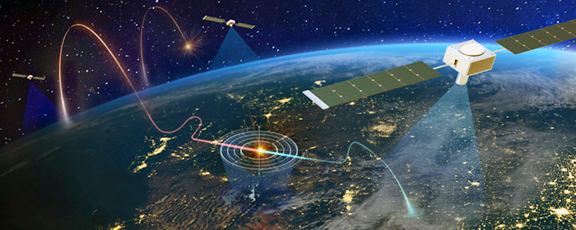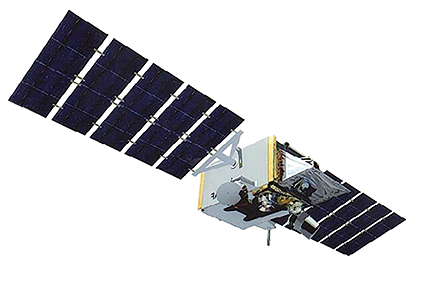

Northrop Grumman Corporation (NYSE: NOC) has been selected as one of four Other Transaction Authority awards for the Phase IIa Prototype Payload Design and Signal-chain Processing Demonstration of the Missile Defense Agency’s (MDA) Hypersonic and Ballistic Tracking Space Sensor (HBTSS) program.
Northrop Grumman is developing a highly capable, affordable, survivable and extensible space-based sensing solution for hypersonic and ballistic missile defense. The company’s concept advances under the HBTSS Phase IIa program (Source: Northrop Grumman).

The 12-month HBTSS Phase IIa will demonstrate the payload design for a proposed satellite constellation to detect and track hypersonic and advanced missile threats. Phase IIa retires technical risk through the demonstration of critical technologies required to track advanced weapons like hypersonic missiles from space.

Artistic rendition of an MDA STSS satellite.
The award continues Northrop Grumman’s longstanding partnership with the Missile Defense Agency and broader space and missile defense community on solving critical national security challenges. Northrop Grumman will demonstrate its agile and affordable approach to producing space-based sensors in large quantities for proliferated, global operations.
Northrop Grumman is building Phase IIa upon the concepts developed in Phase I. Work will be performed at various company locations in the United States.
Northrop Grumman’s end-to-end, multi-domain approach to hypersonic and ballistic missile defense spans technologies in multiple warfighting domains from sea to space, as well as the electromagnetic and cyber environments
Kenneth Todorov, VP, Missile Defense Solutions, Northrop Grumman, said that HBTSS is an important undertaking that allows advanced threats, such as hypersonic missiles, to be seen in ways not previously possible. He added that if threats can be seen, they can be taken out.
The Missile Defense Agency (MDA) operates the Space Tracking and Surveillance System (STSS), which consists of two satellites orbiting at 1350 km., 58 degree inclination, with 120 minute orbital period. STSS uses sensors capable of detecting visible and infrared light and serves as an experimental space tracker for the Ballistic Missile Defense System (BMDS). On September 25, 2009, MDA, NASA, and the U.S. Air Force teamed to successfully launch two satellites into LEO on a Delta II launch vehicle from Cape Canaveral, Florida. Both satellites are operating nominally on-orbit at the Missile Defense Integration & Operations Center, Schriever AFB, Colorado. STSS is participating in integrated BMDS testing and providing risk reduction in support of a future missile defense space tracker.

